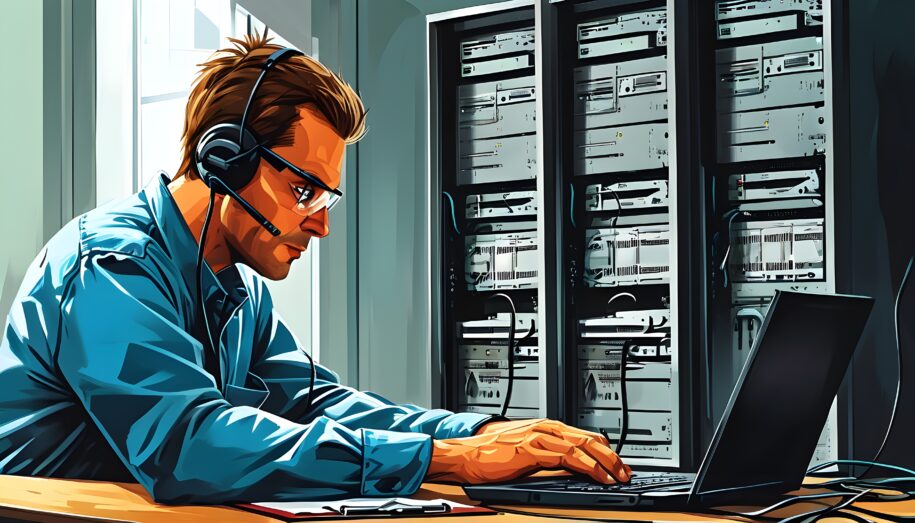
Gaming PCs are powerful machines, but even the best setups can run into issues. From performance hiccups to hardware failures, knowing how to diagnose and resolve problems can save time and frustration. In this article, we’ll go over some common gaming PC issues and offer practical solutions to get your rig back to peak performance.
Table of Contents
1. FPS Drops and Stuttering
Symptoms: Sudden frame rate drops, lag, or choppy gameplay.
Causes:
- Background applications consuming system resources.
- Outdated drivers.
- Hardware overheating.
- Graphics settings too high for system capabilities.
Fixes:
- Close unnecessary background applications: Open Task Manager (Ctrl + Shift + Esc) and close any apps that may be using your CPU, GPU, or RAM.
- Update your drivers: Ensure that your GPU drivers are up-to-date. Visit the official site of your GPU manufacturer (NVIDIA or AMD) to download the latest version.
- Check temperatures and airflow: Use software like MSI Afterburner or HWMonitor to check your CPU and GPU temperatures. If they are running too hot (above 85°C for the GPU and 75°C for the CPU), it’s time to clean the dust out of your system or upgrade your cooling solution.
- Lower in-game graphics settings: If your PC is struggling to maintain a consistent frame rate, consider lowering the graphics settings within your games. Start by adjusting these key settings:
- Resolution: Lowering your resolution can significantly boost FPS, though it may reduce visual clarity.
- Texture Quality: Reducing texture quality will lower the amount of VRAM used, which helps performance on systems with limited GPU memory.
- Shadow and Lighting Effects: Shadows and advanced lighting effects (like ray tracing) are often resource-heavy. Turning these down or off can lead to smoother gameplay.
- Anti-Aliasing: Anti-aliasing improves visual quality by smoothing edges but can take a toll on performance. Lowering or disabling it can increase FPS.
2. PC Randomly Shuts Down or Restarts
Symptoms: The PC shuts down without warning, particularly during gaming sessions.
Causes:
- Power supply unit (PSU) issues.
- Overheating.
- Faulty RAM.
Fixes:
- Check PSU power output: Make sure your power supply is capable of handling your system’s power requirements. If you’ve recently upgraded your GPU or CPU, your PSU might not be providing enough power. Consider upgrading to a higher-wattage PSU.
- Monitor system temperatures: Again, overheating can cause random shutdowns. Ensure that your cooling system is working efficiently. Clean out dust, improve airflow, and replace thermal paste if needed.
- Test RAM: Faulty RAM can cause random crashes. Run Windows Memory Diagnostic to check for issues. If there’s a problem, you may need to replace the RAM.
3. Blue Screen of Death (BSOD)
Symptoms: A blue screen with an error message appears, forcing your PC to restart.
Causes:
- Driver conflicts or corruption.
- Hardware failure.
- Memory or disk errors.
Fixes:
- Update drivers: A driver conflict is often the main cause of BSOD. Make sure all your drivers are up-to-date.
- Run hardware diagnostics: Use tools like Windows Memory Diagnostic or CrystalDiskInfo to check for memory or hard drive issues. If a specific piece of hardware is failing, consider replacing it.
- Reinstall Windows: If all else fails, a fresh installation of Windows can eliminate corrupted files and conflicting drivers.
4. Game Crashes to Desktop
Symptoms: Games suddenly close and return to the desktop without warning.
Causes:
- Software conflicts.
- Insufficient system resources.
- Corrupt game files.
Fixes:
- Check for updates: Ensure both your game and operating system are fully updated.
- Close background applications: Running too many applications in the background can strain your CPU and memory. Use Task Manager to free up resources.
- Verify game files: On platforms like Steam or Epic Games, use the built-in tools to verify the integrity of your game files. This can fix any corrupted or missing files that are causing crashes.
5. No Display on Monitor
Symptoms: The PC seems to boot up, but the monitor shows no signal.
Causes:
- Loose cables or improper connections.
- GPU issues.
- BIOS or hardware problems.
Fixes:
- Check cables and connections: Ensure that the HDMI, DisplayPort, or DVI cables are securely connected to both your monitor and GPU. Try switching cables or ports to rule out a bad connection.
- Reset BIOS: If the display issue persists, reset your BIOS to its default settings by removing the CMOS battery for a few minutes and then reinserting it.
- Test the GPU: Try removing the GPU and connecting your monitor to the motherboard’s integrated graphics. If this works, your GPU may be faulty and need replacement.
6. Slow Performance Despite High-End Hardware
Symptoms: Games run slower than expected, even with a high-performance PC.
Causes:
- Bloatware or malware.
- Poorly Optimized Games
- Incompatible settings.
Fixes:
- Run a malware scan: Use antivirus software to check for malware or unwanted programs slowing down your system. Pretty unlikely unless you are doing sketchy things on your PC
- Poorly Optimized Game: It’s unfortunate that in 2024 we still see games that are poorly optimized for PC. Make sure your games are up to date with the latest patches, or check if others online are having similar performance issues. The internet (and Reddit) are great resources when it comes to finding answers to your questions.
- Adjust game settings: Some games might default to settings that aren’t optimal for your hardware. Use tools like NVIDIA GeForce Experience to automatically optimize your game settings for performance.
Need more help? Head on over to our support page or contact our customer service for assistance – we’ll get you back gaming in no time!